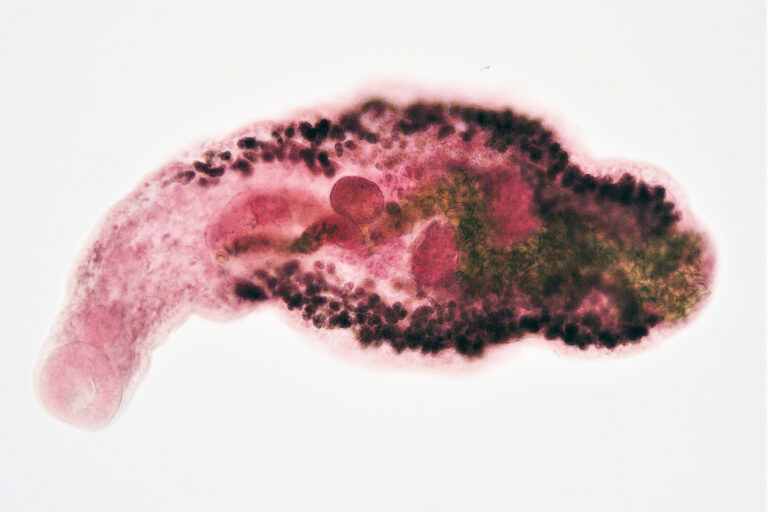Plagiorchis muris

Vertebrates
The fluke Plagiorchis muris parasitizes the small intestine of various reptiles, birds, and mammal species. Freshwater snails, insect larvae, and different fish species can serve as intermediate hosts. Individuals found in a study (Hong et al. 1996) ranged in body length from 2.85 to 2.99 mm and in width from 0.82 to 0.95 mm. The eggs of Plagiorchis muris are elliptical in shape and have a golden-brown color. They measure between 32 and 38 µm in length, 20 and 24 µm in width, and are excreted through the feces of the definitive host.
Human pathogenicity: Infections of humans with the fluke Plagiorchis muris have been reported, albeit in small numbers. However, no specific disease symptoms or negative effects have been observed as a result of the infestation (Hong et al. 1996).
-
Hong et al. (1996)A Human Case of Plagiorchis muris (Tanabe, 1922: Digenea) Infection in the Republic of Korea: Freshwater Fish as a Possible Source of Infection. In: The Journal of Parasitology, vol. 82, n° 4, p. 647.